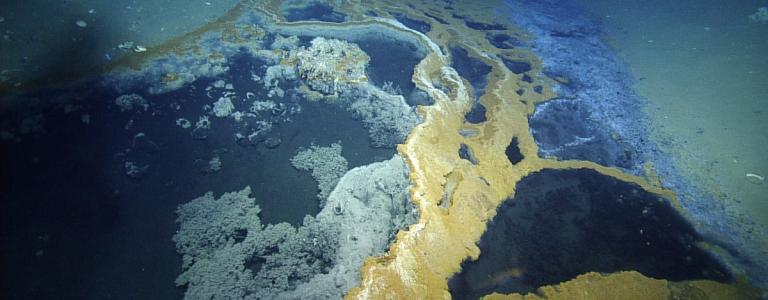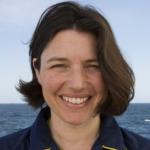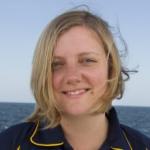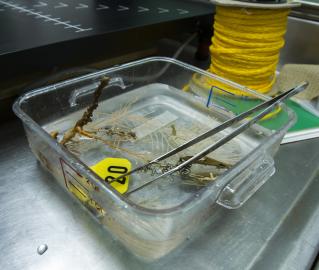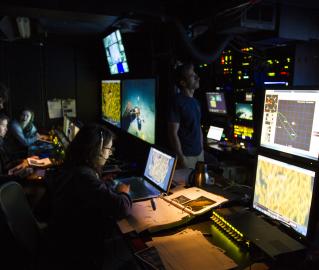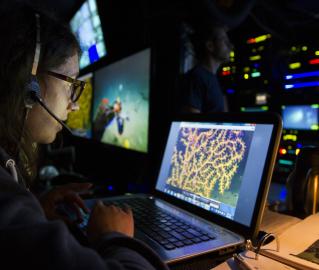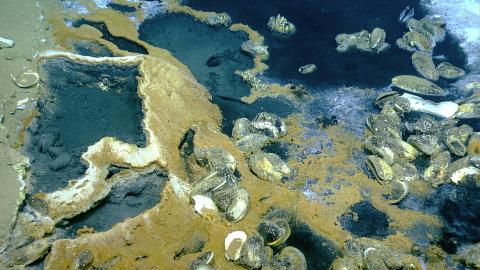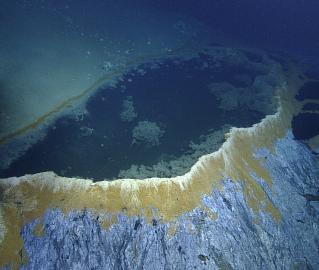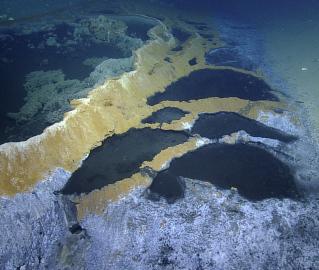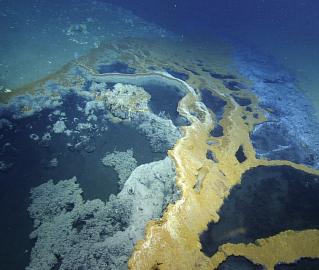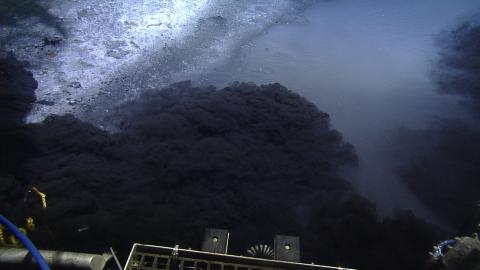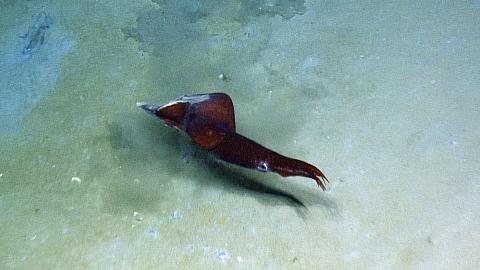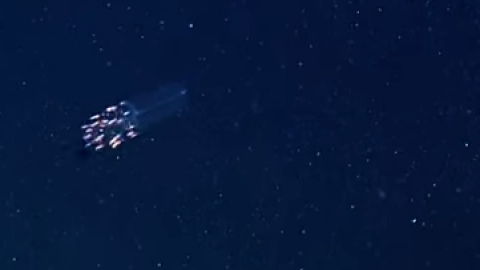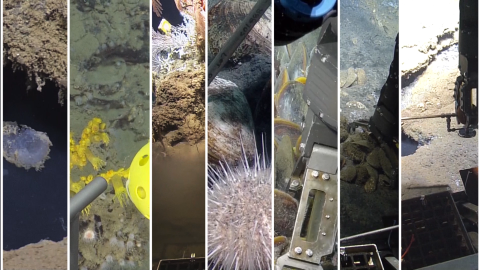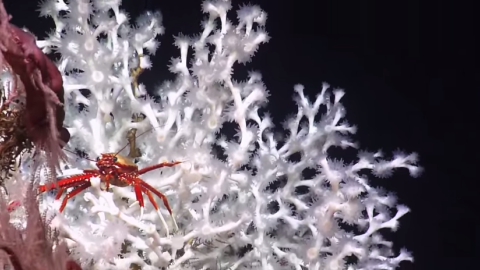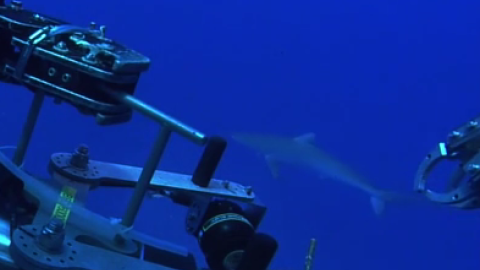On this leg of the expedition, we will return to cold methane seeps and brine pools investigated during the 2014 season to continue an examination of the symbiosis between the mussels that live at the seeps and the bacterial symbionts that they host. Previous work has shown that different species of Bathymodiolus mussels have different combinations of symbionts that allow them to survive under varied conditions at the seeps. The symbionts utilize hydrogen sulfide or methane. Sulfide-oxidizing symbionts use the energy from sulfide to grow using CO2 as their sole carbon source. In the case of methane-oxidizing symbionts, the methane is their carbon and energy source. We will collect the mussels and their surrounding water and sediment to characterize the microbial populations in each using next-generation sequencing technologies.
In order to collect these samples, we will visit some of the most impressive cold seep habitats of the Gulf of Mexico: tubeworm fields, outcropping methane hydrate structures, and brine habitats. The brine is formed from the interaction of water with subsurface salt deposits. As the sediments are compressed, the brine fluid migrates up to the surface, where it comes out on the seafloor. It may form distinct pools, or flow downhill like a river. Because it is saturated in methane, and typically very low in oxygen, the symbiotic mussels are some of the only organisms that can survive around it. We hope to learn more about how they make a living there.
